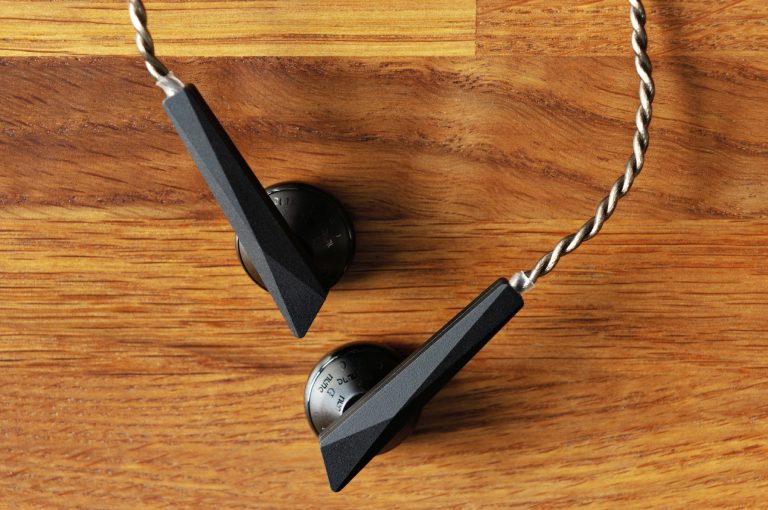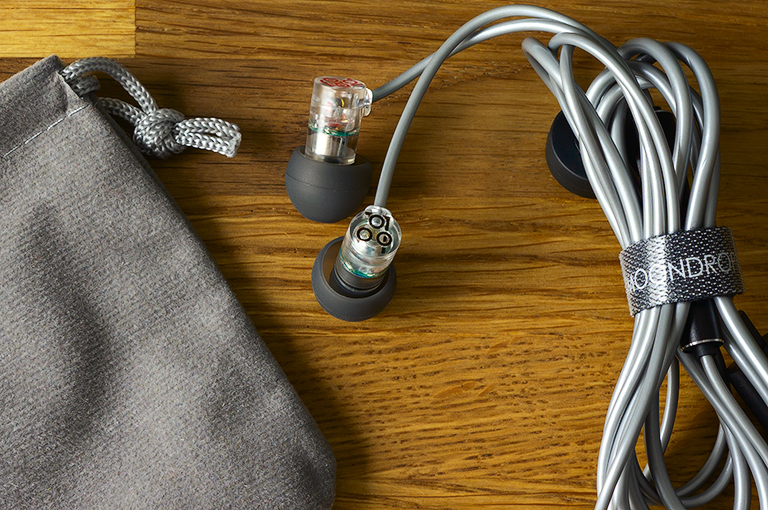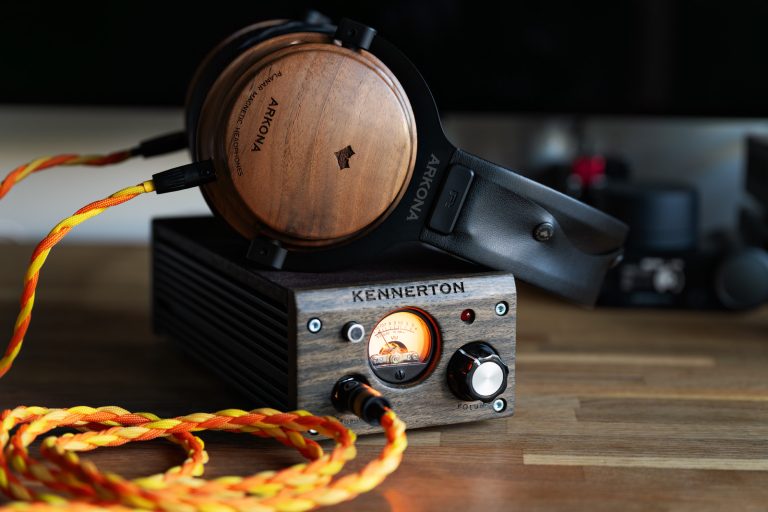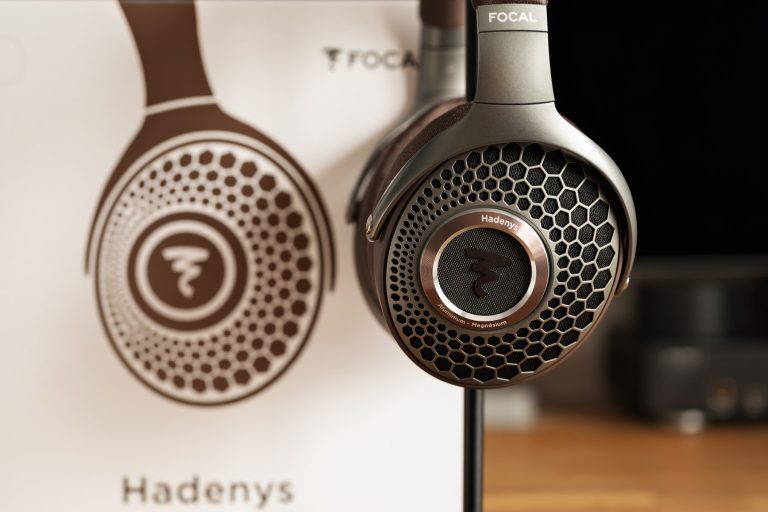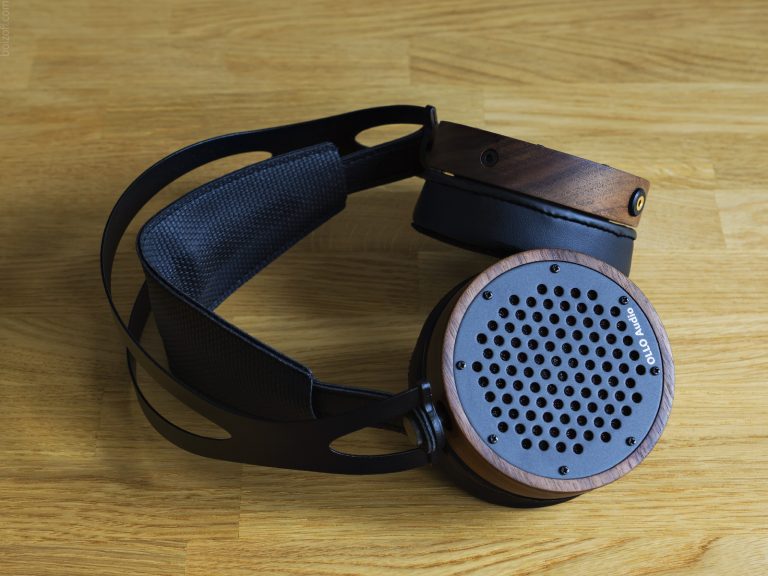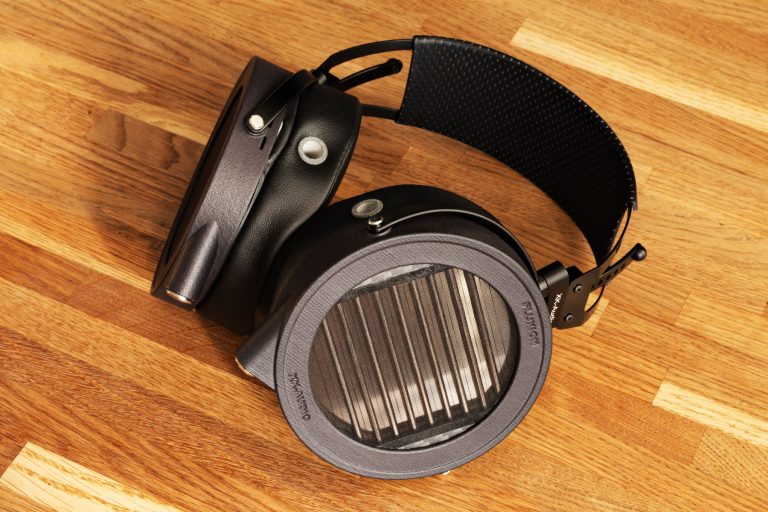Aune AR5000 Review. Fanfare entry!
I didn’t have a chance to use any of the Aune products until recently, although I’ve read a lot of good reviews: their amplifiers usually have nice ratings on the Internet. That’s why I got curious when their first AR5000 headphones were announced in November 2023, and not just headphones but over-ear full-sized ones! Moreover, the expected price was something around $280, and this is exactly the yard where my favorites hang out – the Moondrop PARA and the HiFiMan Sundara.
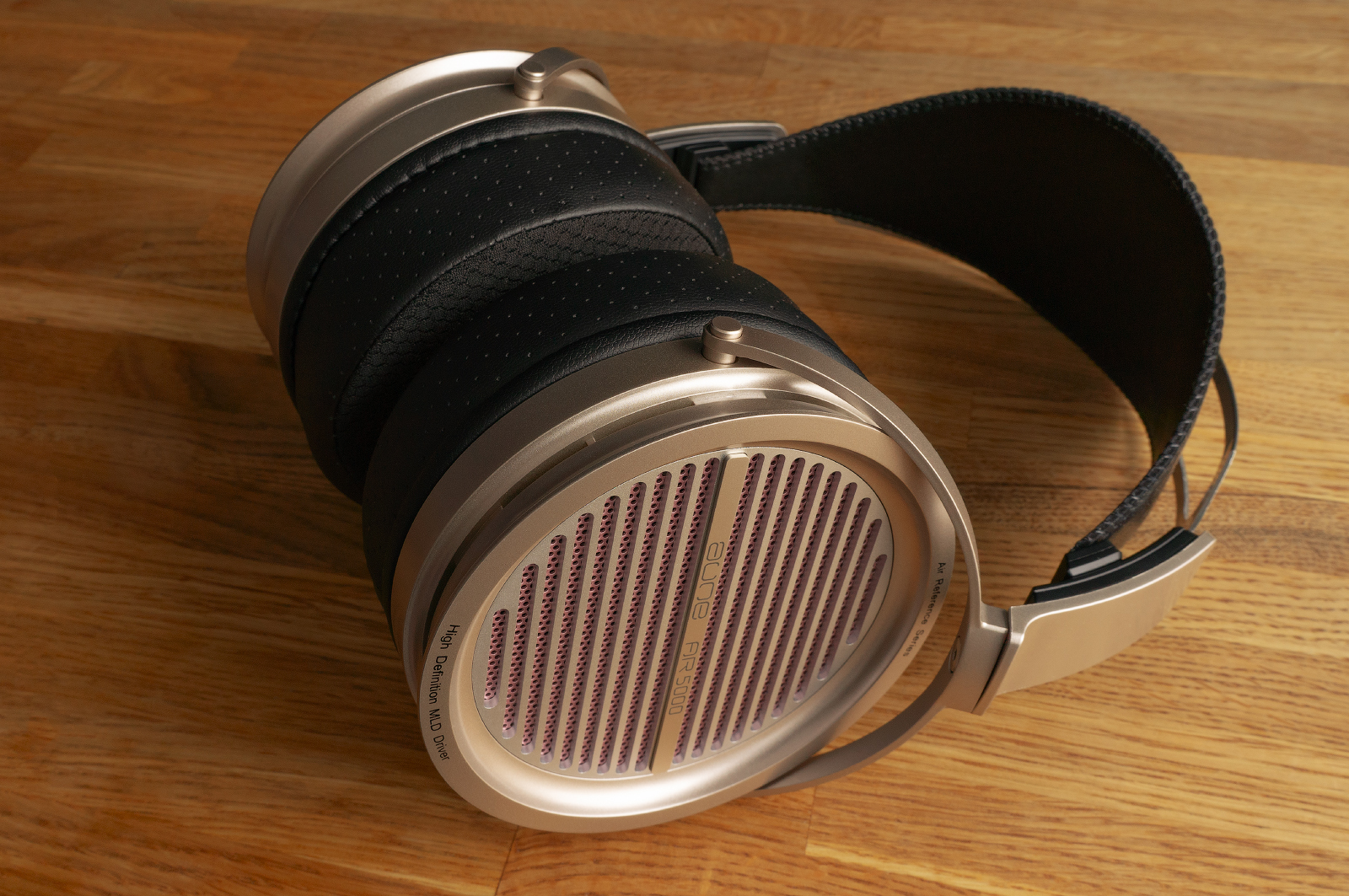
So I rushed to AliExpress, ordered the AR5000, received them – and here you are reading this review. Let’s go!
What’s included
The headphones come in a large high-quality cardboard box, which looks and feels kinda premium, if not even luxurious.
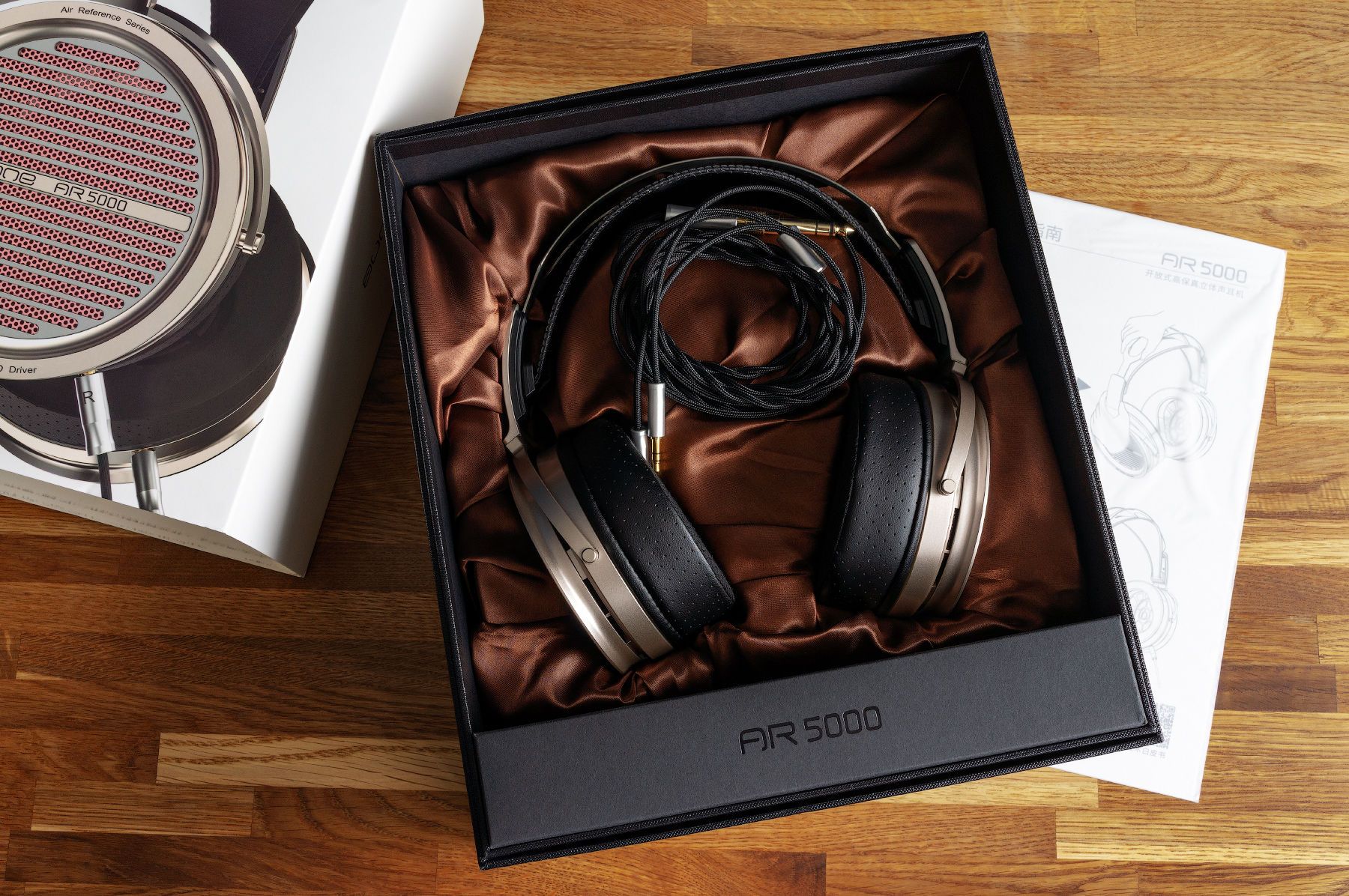
What do you get:
- the headphones themselves;
- 1 pair of earpads;
- a cable with a 3.5 TRRS connector on one side and two 3.5 TRS connectors on the other;
- the 3.5-to-6.3 adapter;
- some papers.
Quick specifications overview
- Design: over-ear, open-back.
- Driver type: 1 dynamic one.
- Membrane diameter: 50 mm.
- Impedance: 28 Ohms.
- Sensitivity: 108 dB/mW.
- Connectors: 3.5 TRS.
- Weight: 348 g without cable.
Design, assembly, technology
The manufacturer states there’s a new driver with an MLD diaphragm in the AR5000. Where MLD stands for Multi-Layer Distributed, that is, the diaphragm is multilayer, and something gets distributed either across the layers, or the diaphragm itself is somehow distributed.
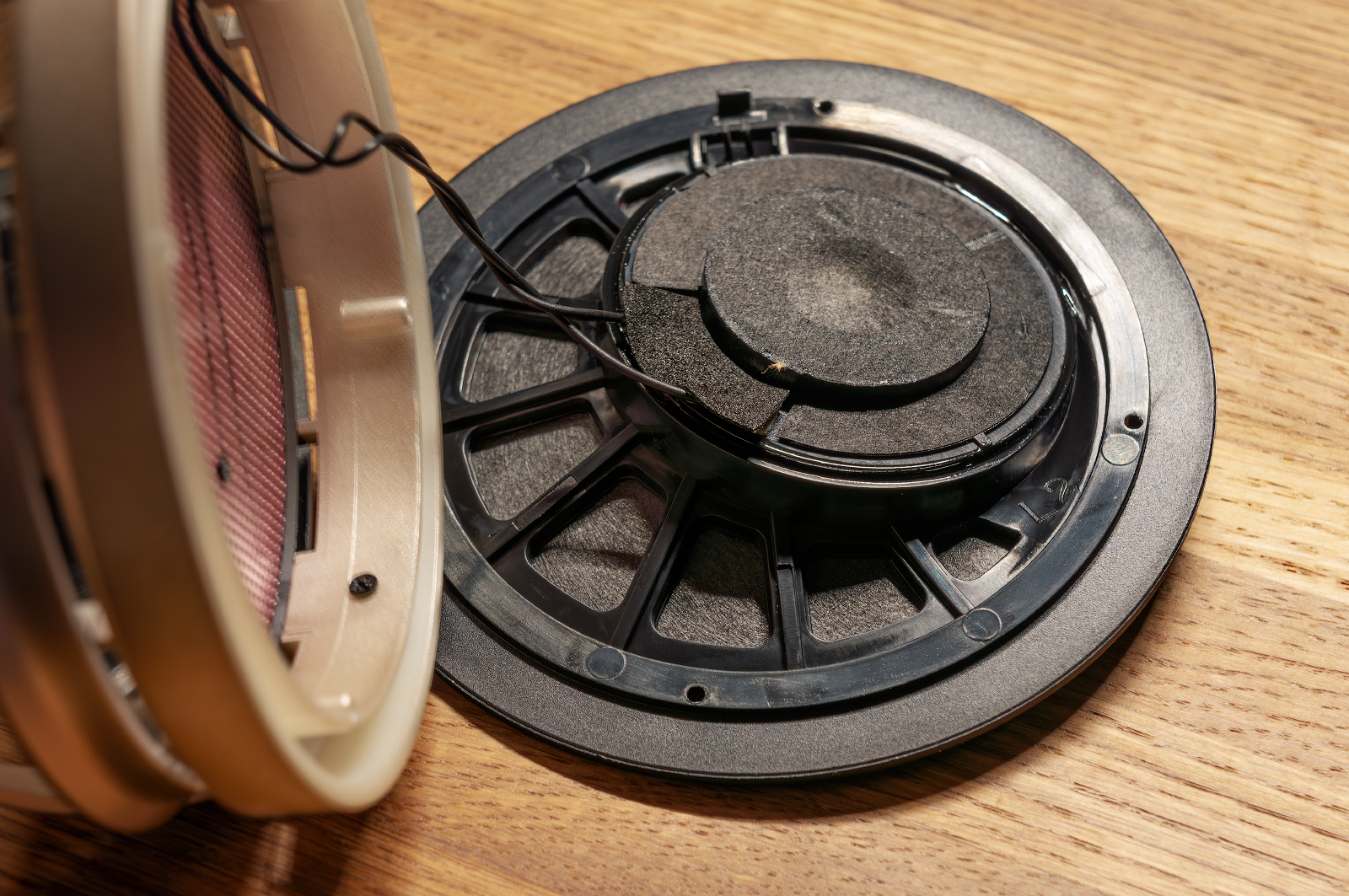
No further details are given (unfortunately).
The second interesting point is a significant tilt of the driver relative to the earcup plane. In other words, the driver’s sound is directed straight along the normal plane of the auricle, and not at an angle (as in 95% of headphones). Which theoretically should have a positive effect on the space and sound stage of the AR5000.
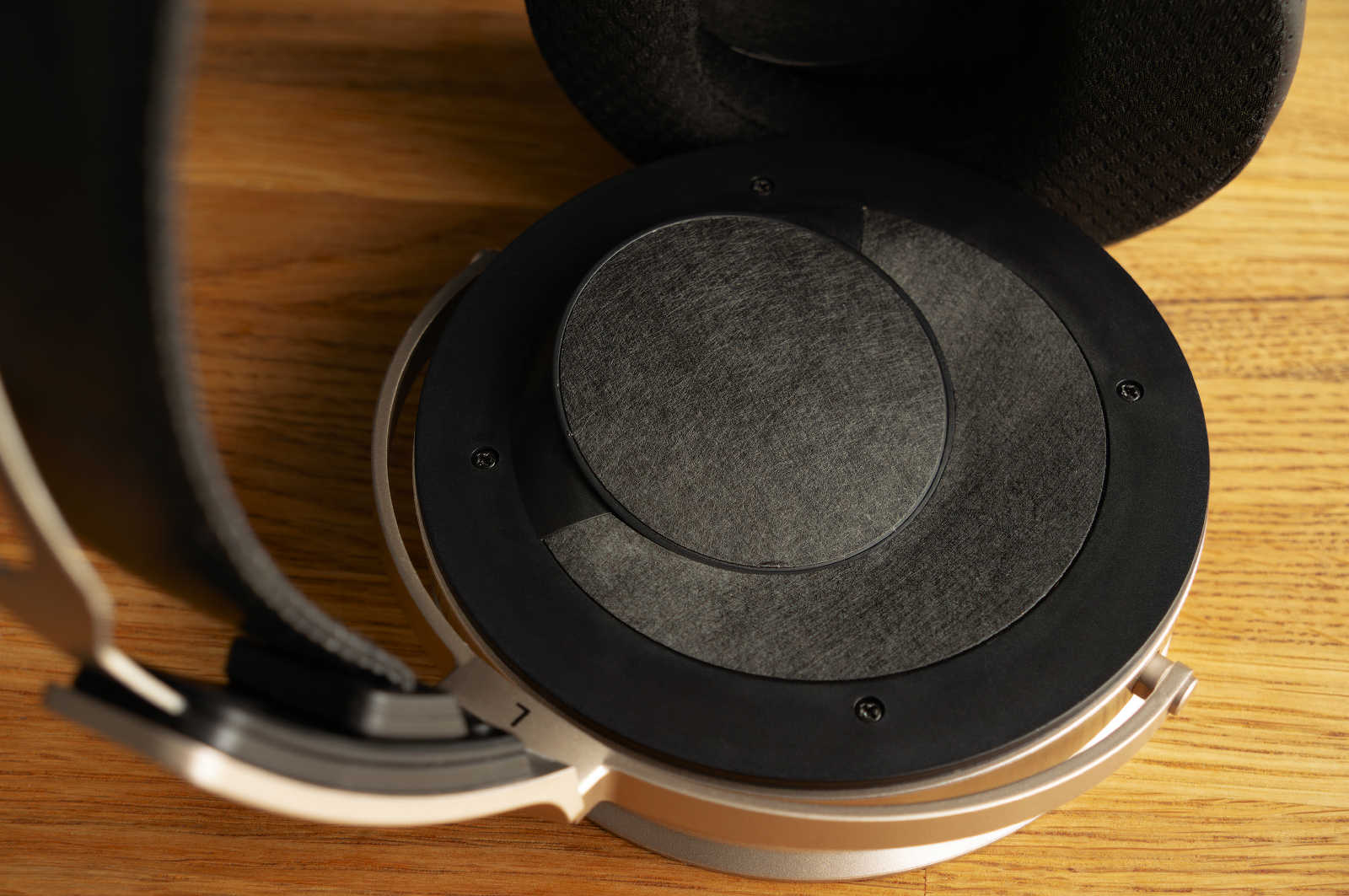
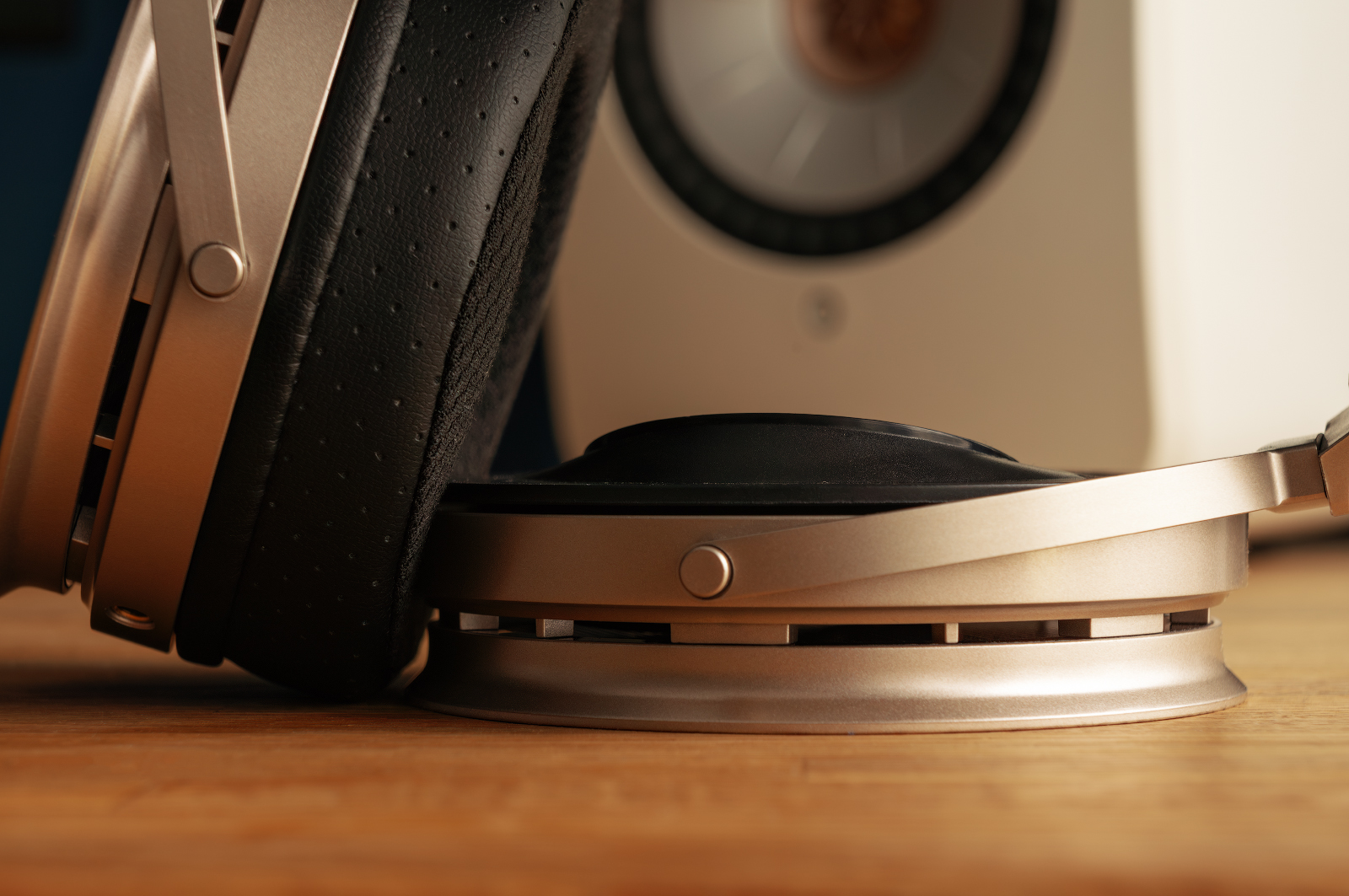
The headphones themselves are assembled just amazingly well. The manufacturer’s made an attempt to simplify the design, so there’s metal in all the main nodes, however the earcups and the headband side overlays are plastic.
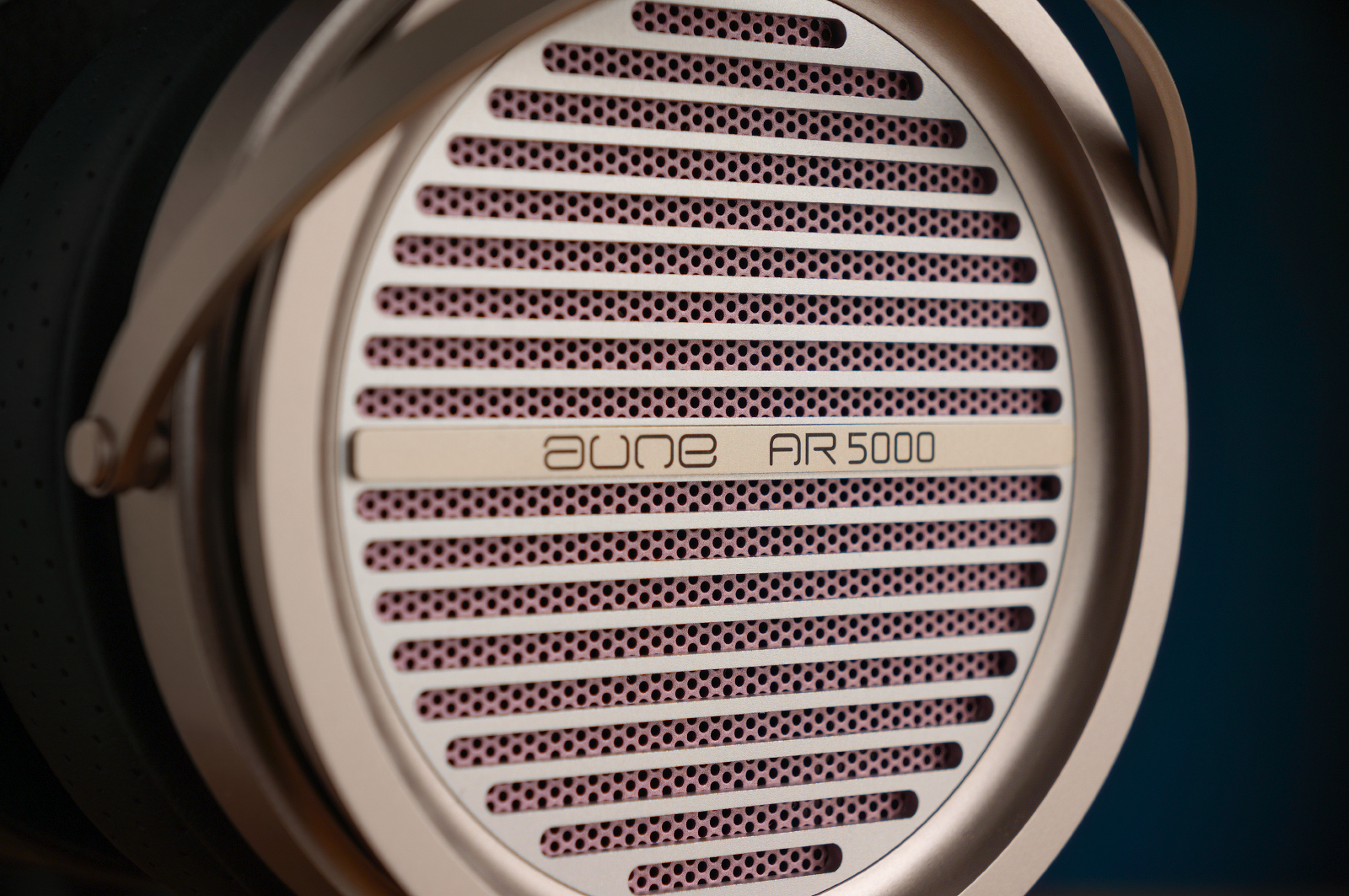
And there is nothing wrong with that, since it all contributes to the headphone light weight of only 350 grams! And I don’t have any, like, ANY complaints about the finish and assembly.
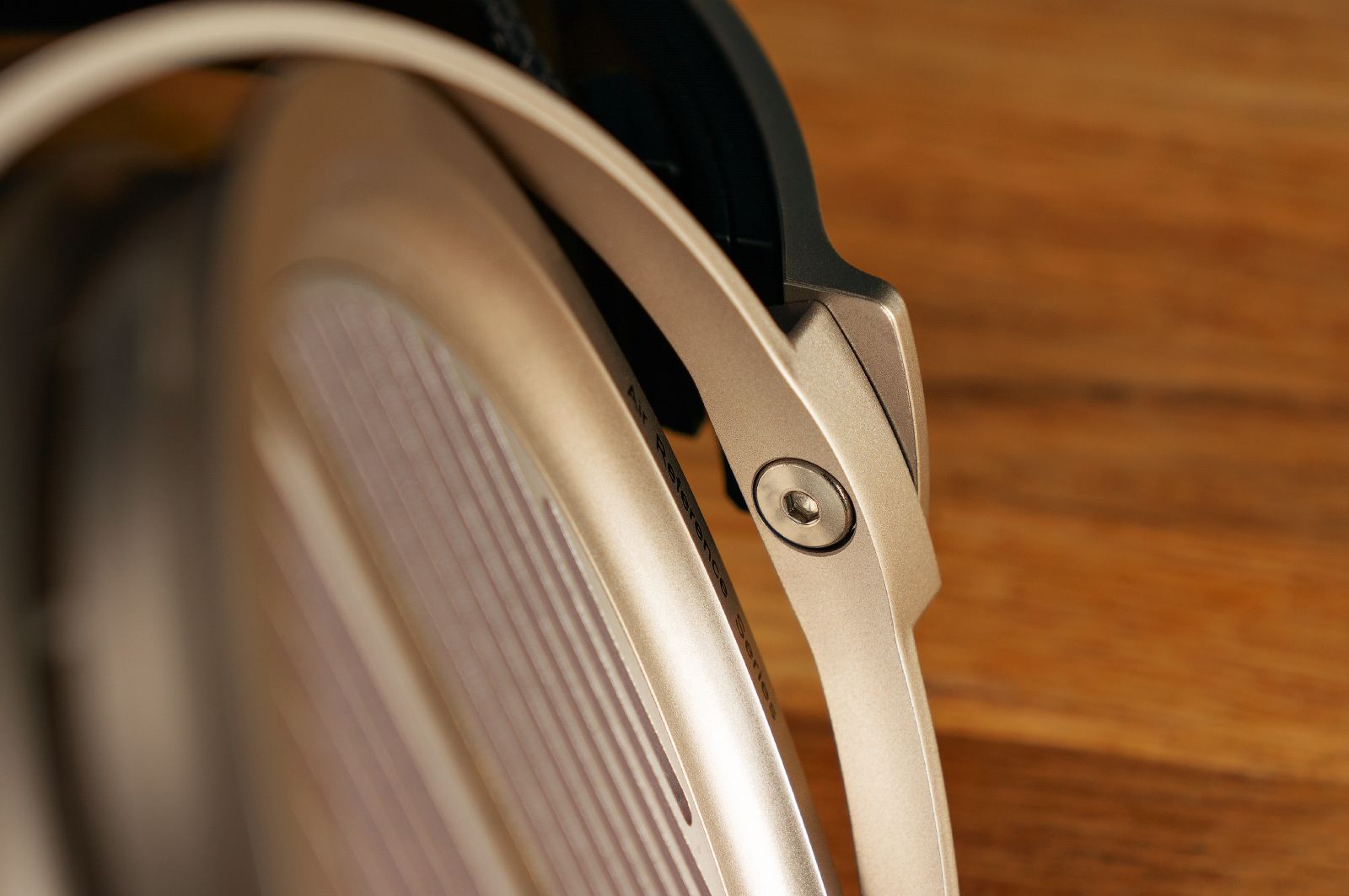
The headband arc, rotation joints and earcup attachment arcs, as well as external grilles are all metal. Which is very reasonable.
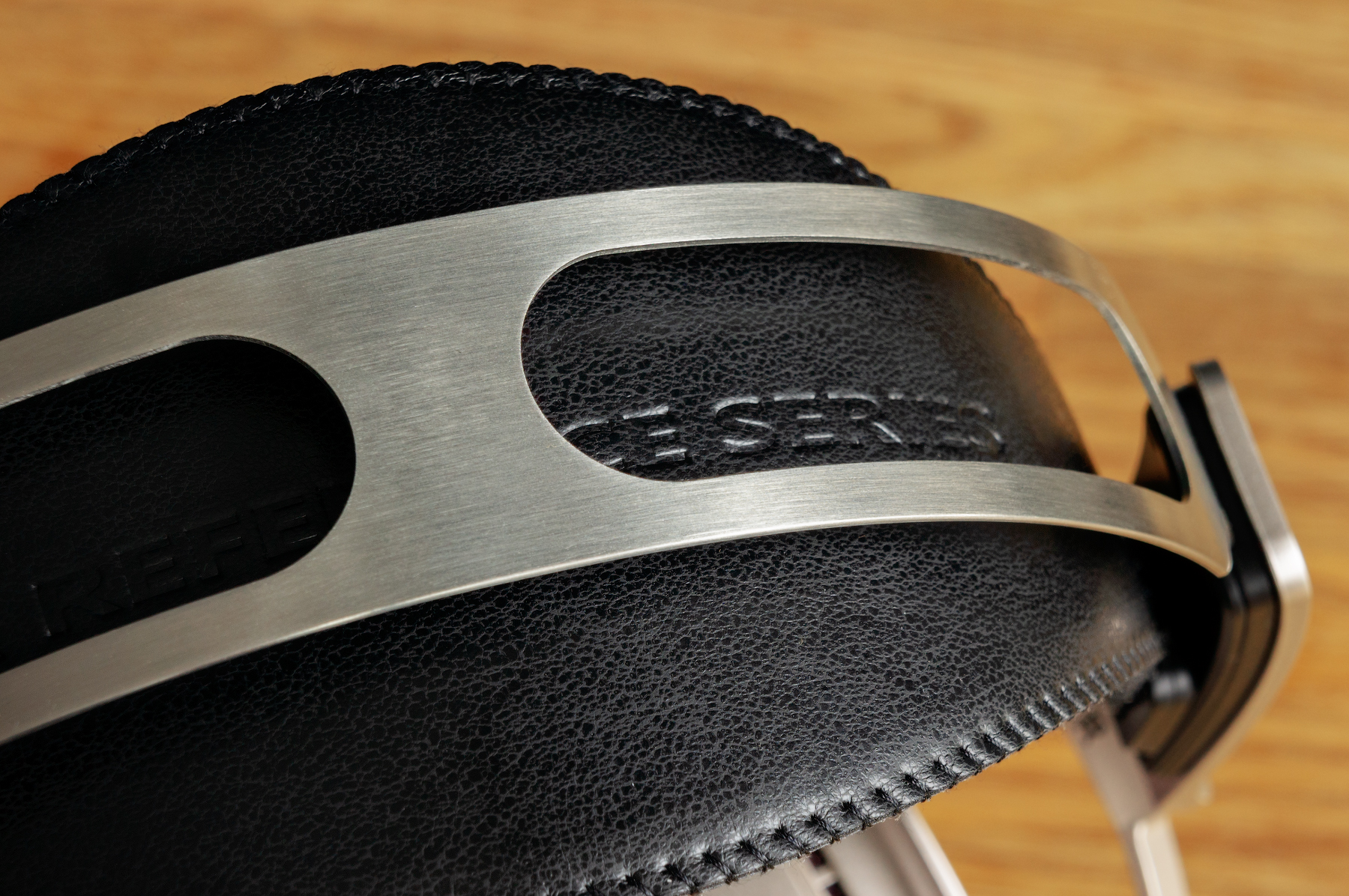
Again, the finish quality is extremely high, and the headphones look very distinctive at the same time, so I’d called this approach ‘cocky minimalism’ (why not). It’s also worth saying that nothing screeches or hangs loose, I can’t see any joint gaps to strike my eyes. No burrs, too!
The earpads are attached via regular ‘skirts’ which you should direct into a narrow slot.
Not too convenient, but it’s versatile. The provided cable is good and pleasant to touch. It’s 1.5 meter long, it’s soft and has metal connector enclosures and a splitter.
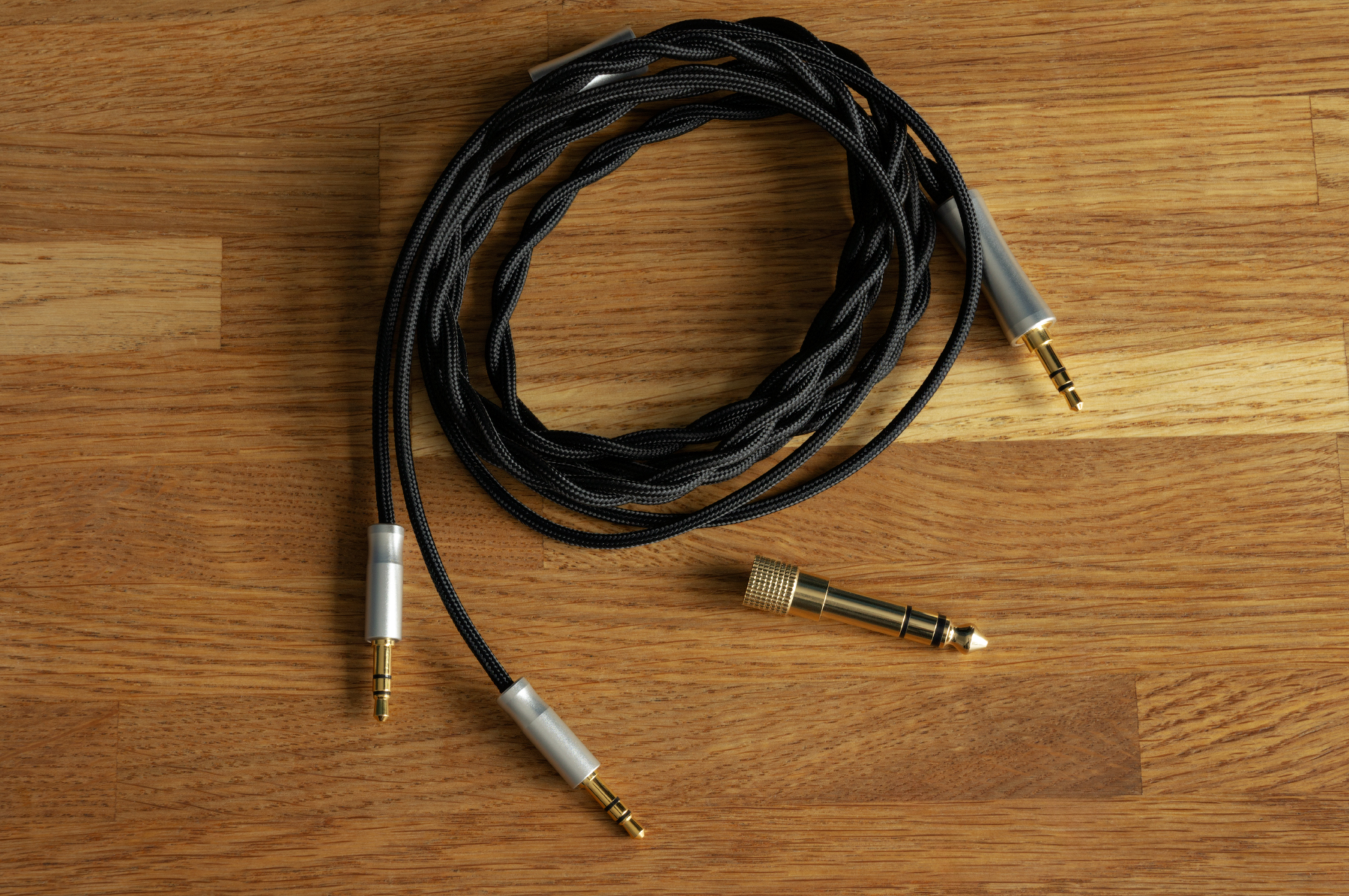
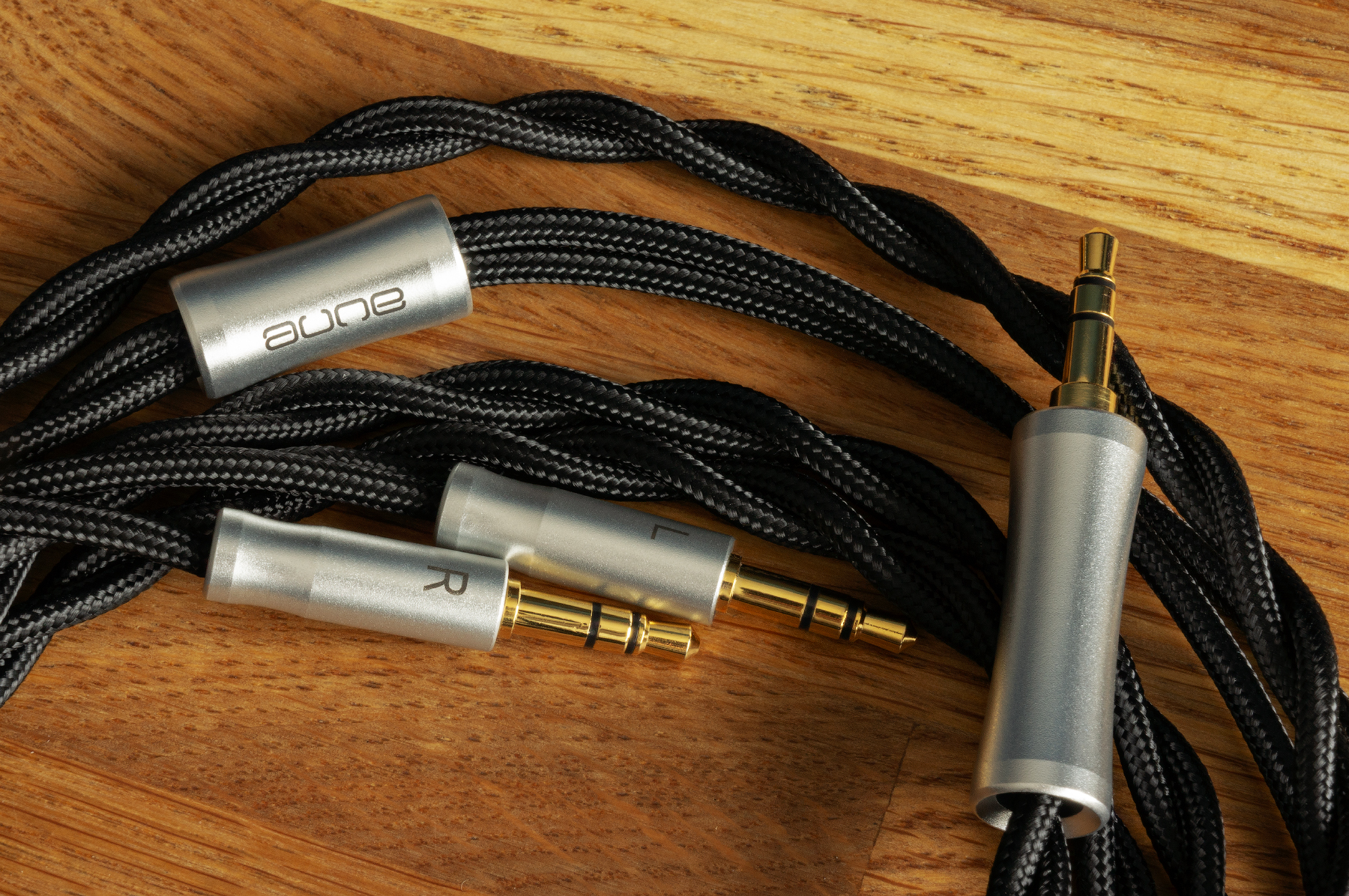
The only thing to seem inconvenient would be unobvious headband positions when you change them. But this one really isn’t an inconvenience once you’re used to it.
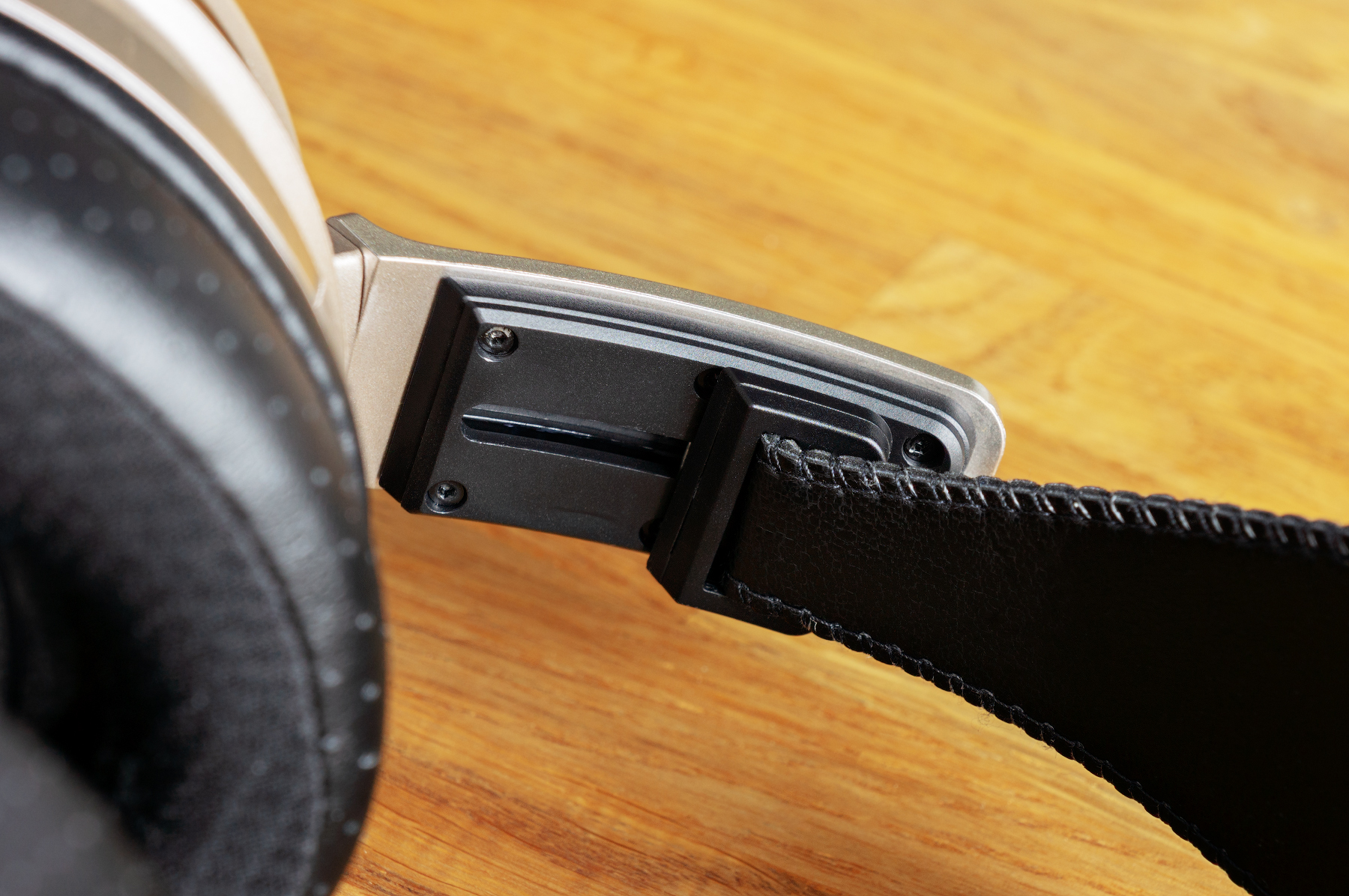
Ergonomics
It feels like the manufacturer avoided any kind of common mistakes in terms of ergonomics.
- The earcups can be rotated all you want.
- The cable connectors go in at an angle.
The headband is very wide and perfectly distributes the weight pressure on your head.
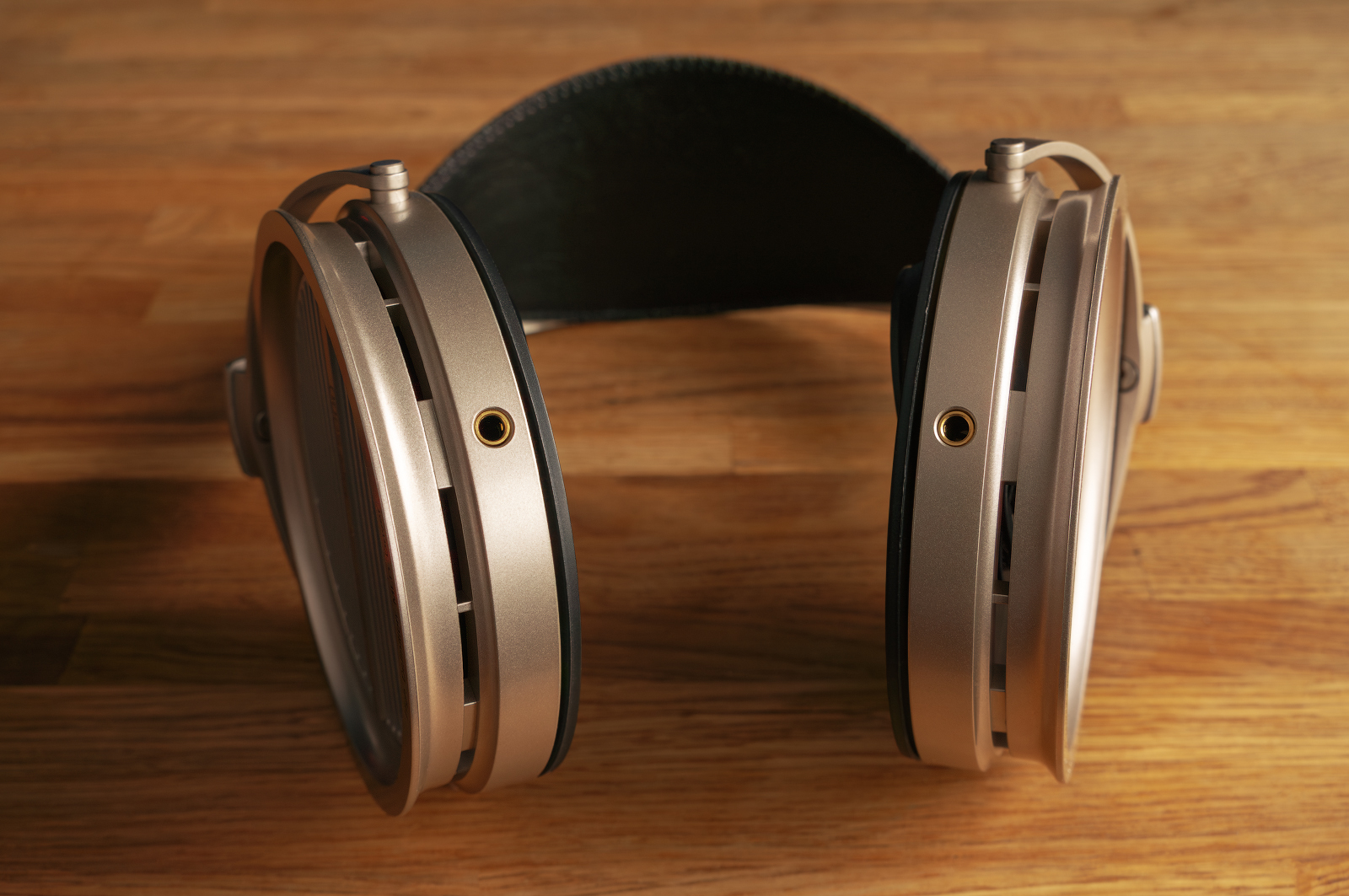
The earpads have a pronounced bevel and gently press against your head, leaving no gaps and drafts around the ear. The outer earpad surface is made of perforated faux leather, and the insert adjacent to the head and the inner one are fabric. Inside, you can find some shape memory foam.
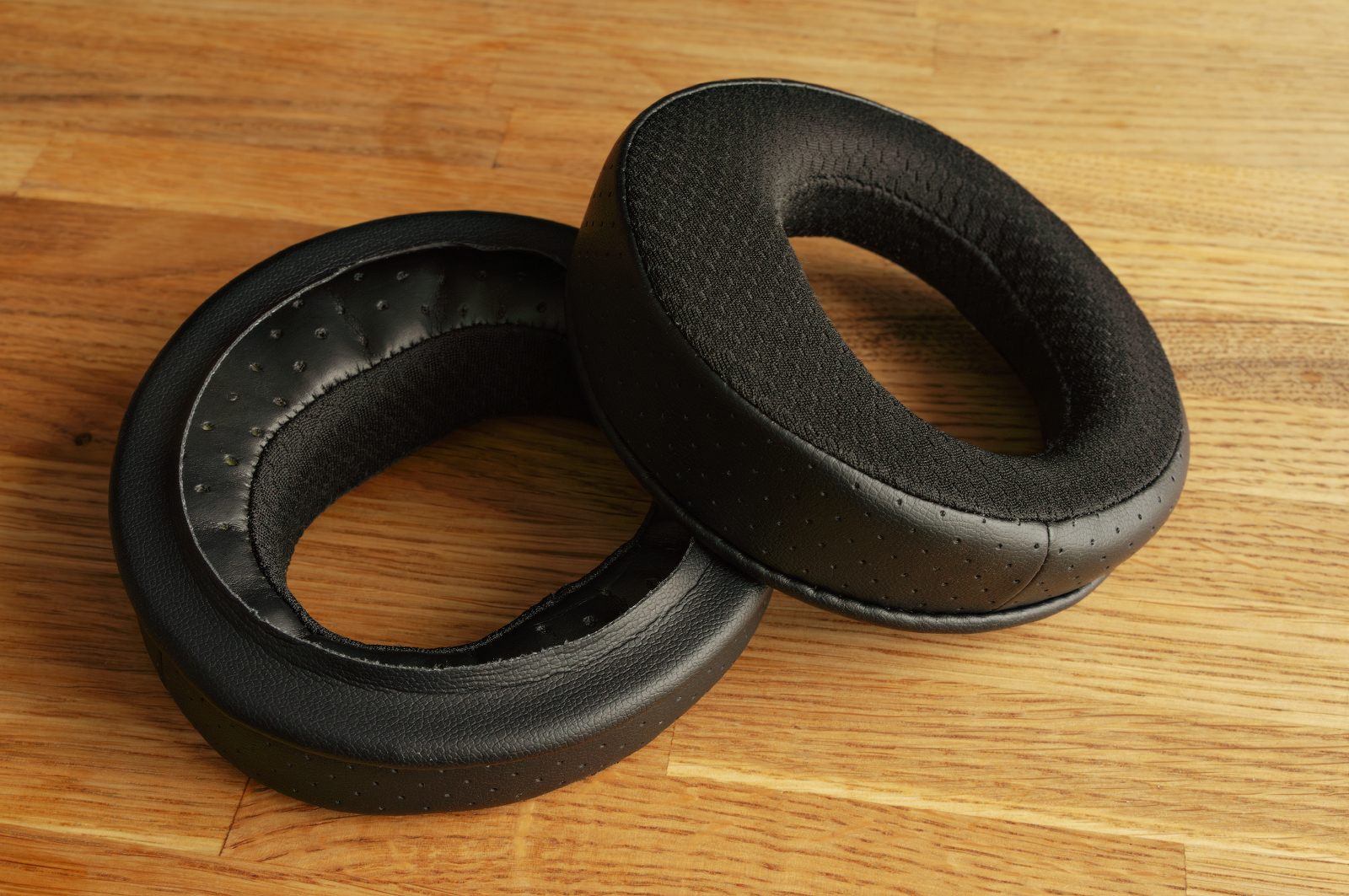
The ear cutouts of the earpads are oval so that there’s enough space for even the most lop-eared listeners (and your ears still won’t touch the earcup inside part). Add the correctly engineered pressure.
And voilà – here’s your highest level of comfort without any nuances.
Cool!
Subjective sound impression
The AR5000 sound ‘academically’ correctly and unusually at the same time. The headphones have a neutral tuning, though the bass slightly dominates, and I’d say the overall sound is smoothed, surprisingly whole and natural.
The subbass. Well, it’s definitely here, but if the track uses other frequency sections too, the subbass never dominates. A quick example: in the Massive Attack’s ‘Angel’ or Kaleida’s ‘Detune’, you’ll hear the 40-60 Hz as expected: whippy, fast and weighty. But try the ‘Insane’ by Korn or ‘Shield Wall’ by Amon Amarth, and you won’t hear any hard punching. Therefore, the subbass can be characterized as extremely accurate to the extent that it can be perceived as uncertain or even boring. Which is neither a fail nor a win – it’s just an objective fact.
The bass seems to be slightly raised. But in general, it’s completely linear, like the subbas. I’ve never ever heard such a sound delivery from some dynamic driver headphones in this frequency range section in terms of sound clarity and neutrality at the same time. To be honest, I didn’t even think that single dynamic driver headphones could sound like this! Anything with sky-high cost and an ultra-high-tech driver (see Focal Utopia)? Yeah, sounds legit! But this model?..
The medium frequencies, the upper frequencies and higher are simply amazing in terms of balance, realism and… fulness, I’d say. You can clearly hear any sound and tiny noise in the track – though without a single connotation. The AR5000 will play everything the track has in it. At the same time, the upper part from 10 kHz and to the right on the graph is sterile from any synthetic sound traces, additional sparkle or exaggerated detail. Of course, if there’s something of what’ I’ve just enumerated in the track – you’ll hear it for sure. Otherwise, no – forget about it.
I’d also point out another good point about the AR5000, which is their sound stage: it corresponds to the conceived sound source positioning from the music track, and it can be almost intimate – or it can be vast as hell depending on how and where the artist’s recorded their piece. The sound source positioning is really not bad, but their layering, that is, the perceived distance to the sound source, is just unbelievably good. In this sense, the AR5000 do amazing job when it comes to detail: they don’t have that overraised top range section, but they separate instruments and sounds very delicately and clearly to put them in their places.
So! Is the AR5000 sounding perfect? Sorry, but not quite. The main disadvantage would be a certain slush in the lower part of the mid-range, which manifests itself in tracks heavily saturated with a variety of frequencies. Death metal, some crazy alternative metal – these won’t be as spectacular and technical with the AR5000. Some complex orchestral music sounds really impressive, though.
And the second disadvantage is the unpleasant clamorousness which only appears in some tracks and only at pretty high sound volume. This might be happening because of some resonance somewhere around 4-5 kHz, or because of high distortion level – or it’s just a particular headphone tuning. Anyways, my ears can’t tolerate the AR5000 when the music is loud, and at the same time there’s a bright harmonica or something similar from the same frequency range section.
Not many of such tracks exist… but they exist.
In general, I think the AR5000 are another (along with the Moondrop PARA, for example) breakthrough in their price range. We have a neutral, accurate, full-fledged and incredibly flexible sound in terms of the sound stage – such specimens used to cost something around $650-900, and it seemed like a reasonable price.
Sound source choice
The headphone sound with different sources was assessed using a device for instant source switching. The sound volume was first aligned on the measuring rig at a 1 kHz frequency. All software sound processing algorithms were disabled on the sources.
The ADI-2 DAC fs, DAWN Pro, Powerdac v2.1, Hiby R5 Pro – the AR5000 sound practically the same with all of them. The Topping D90 is a different story in terms of balance (-10 dBr for the XLR input, M gain level, knob set on the 9 o’clock position): it feels like it somewhat improves the subbass and makes it more lively and fast. I emphasize: ‘somewhat‘.
Measurements
To take my measurements, I’ve connected the headphones to the RME ADI-2 DAC (SD Sharp filter) with a provided cable via a standard 3.5-to-6.3 adapter. The measurements were made using a rig conforming to the IEC60318-4 standard – with an auricle and auditory canal simulator. For each of the earcups the measurements were made until 5 consistent measurements were obtained for the left and the right channels; any deviant measurements were excluded. The smoothing is indicated on the graphs. I’ve described the limitations of my rig and the headphone measurements in general in this article.
The AR5000 frequency response graph:
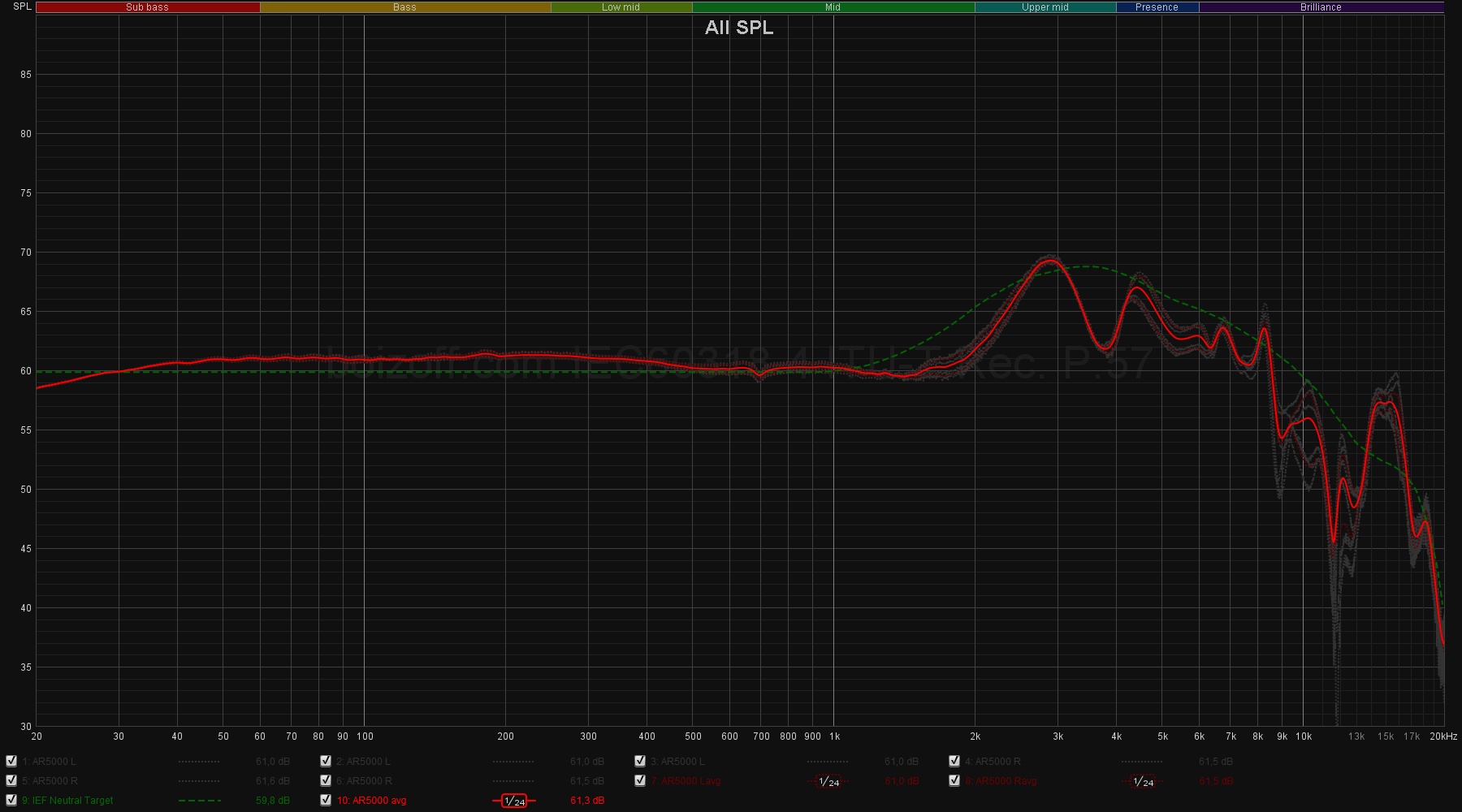
What can we see:
- Excellent linearity from 30 to 1000 Hz with a 1.5 dB amplitude. Which is brilliant for a dynamic driver. At the same time, the conditional maximum falls on the area of about 200 Hz, and this rise is very, very smooth. I suppose it’s this exact maneuver that makes us perceive the sound as slightly warmer and slightly mixing into that slush I’ve mentioned above in complex compositions. Here I feel important to remind you that it’s at 200 Hz where the main sound ‘dirt’ comes to the surface. Partly for this reason, in the Harman Target Response Curve, the 200 Hz are smoothly dipped relative to 1 kHz and the subbass portions.
- The middle part of the range has all the right dips and accents although the area around 1.8 kHz could be a little bit higher, I think.
- The upper-frequency section is fully featured, as far as my rig is even able to measure it.
The volume equivalence of the left and right channels. Which is acceptable, but nothing exceptional.
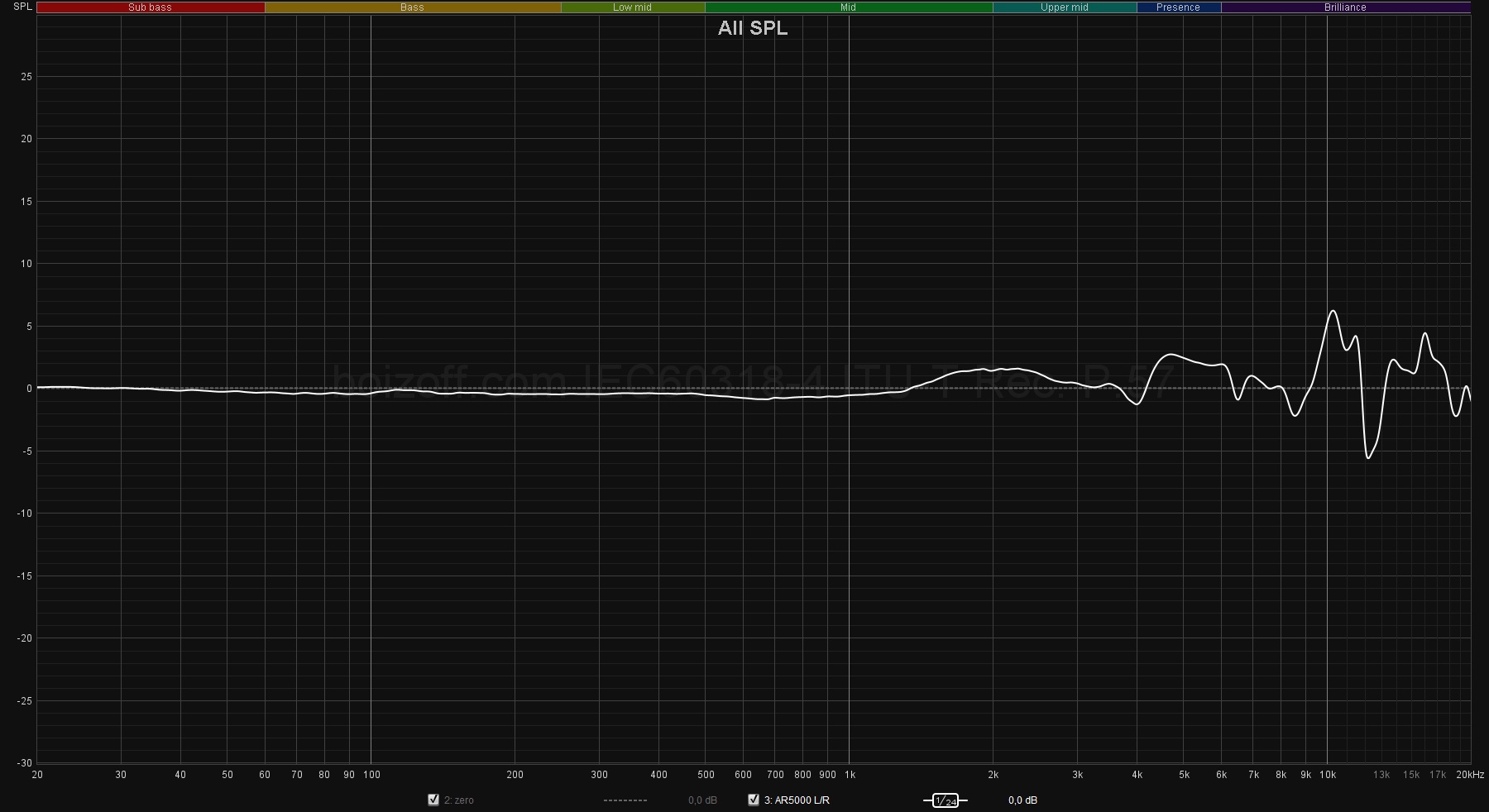
Frequency response changing with the rotation. It’s practically absent. However, for the sake of justice, I should mention, that rotating the headphones back raises the mids a bit and drops 12,5 kHz
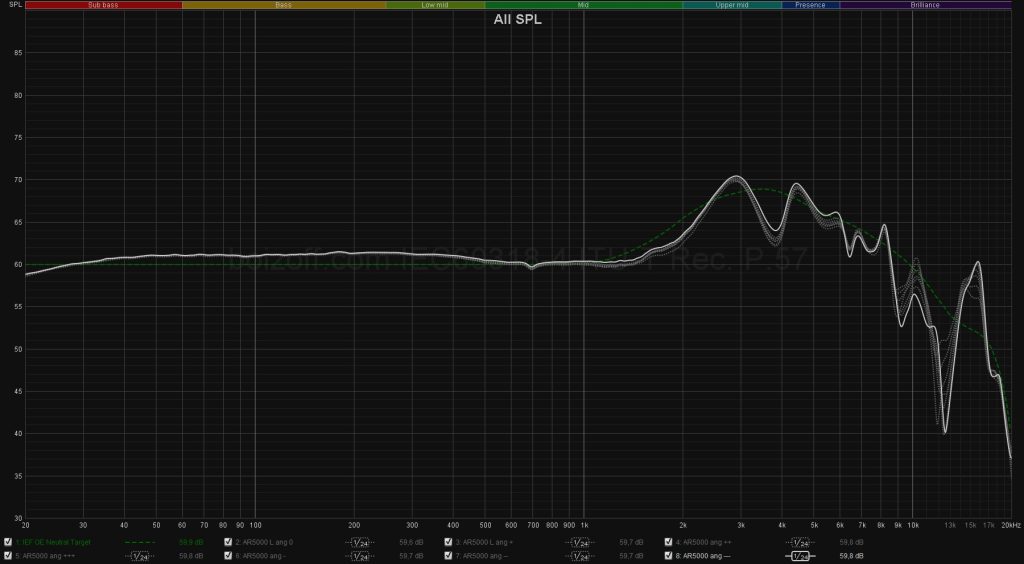
Frequency response changing with the linear shifts. You shift the headphones back, and a very strong effect on the sound manifests itself: everything from 1 to 1.8 kHz is radically corrected, but the 2.7 kHz point ‘jumps out’ beyond any reason. You shift the headphones forward, and the opposite happens: the headphones deliver a warmer sound.
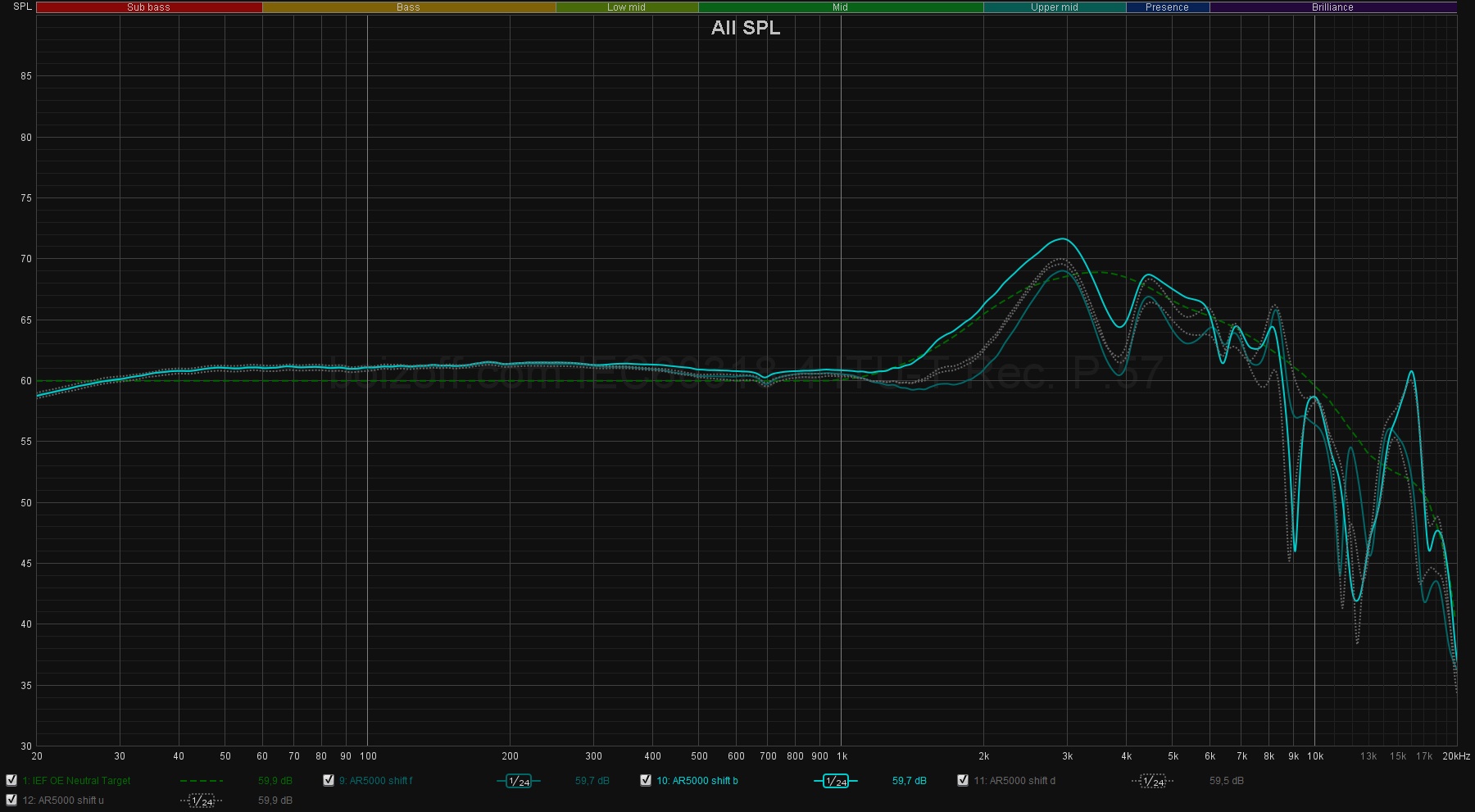
Frequency response changing with the earcup pressure changes. The p curve here represents the minimum pressure, and the p++ is the maximum one. The dependence is soooo slight: it only gives some -2 dB at the subbass portion.
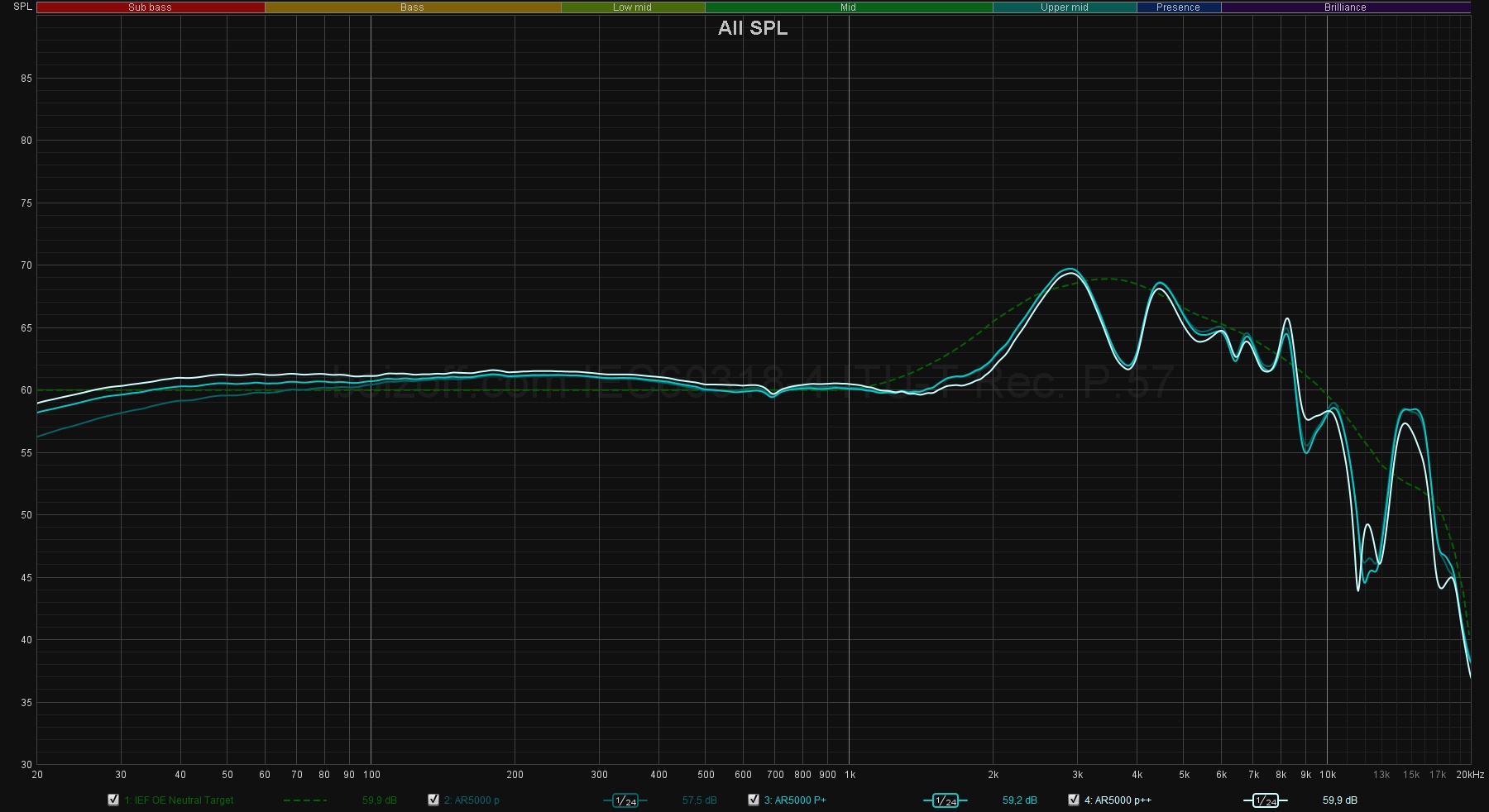
Well, a number of measurements you’ll see below are just for your information and can’t be taken into any serious account, since my equipment isn’t cool enough for any adequate measurements of these parameters.
Distortion at 90 dB volume.
The graph shows us that for the most part the AR5000 perform below 0.2%, which is great.
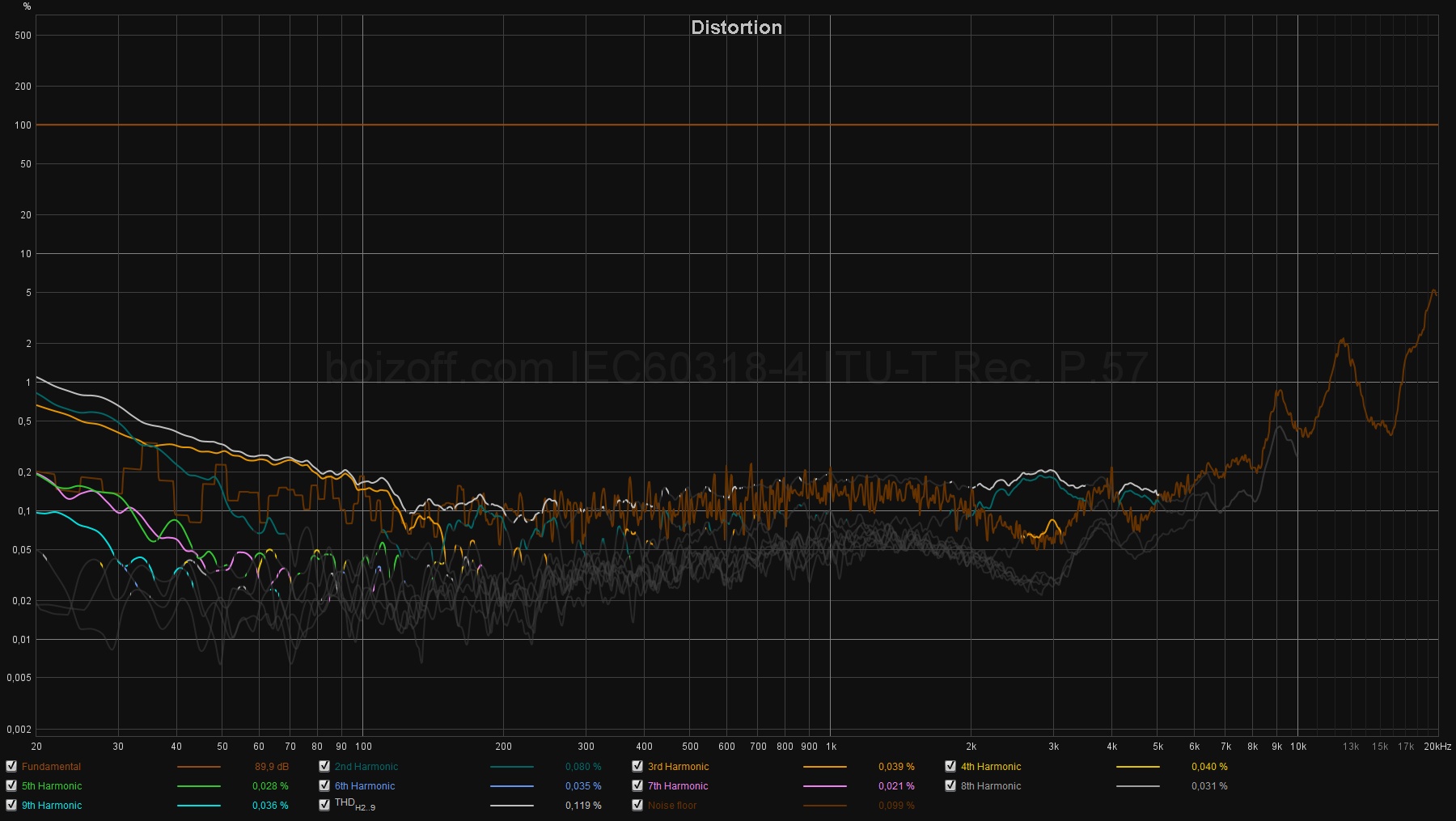
Waterfall:
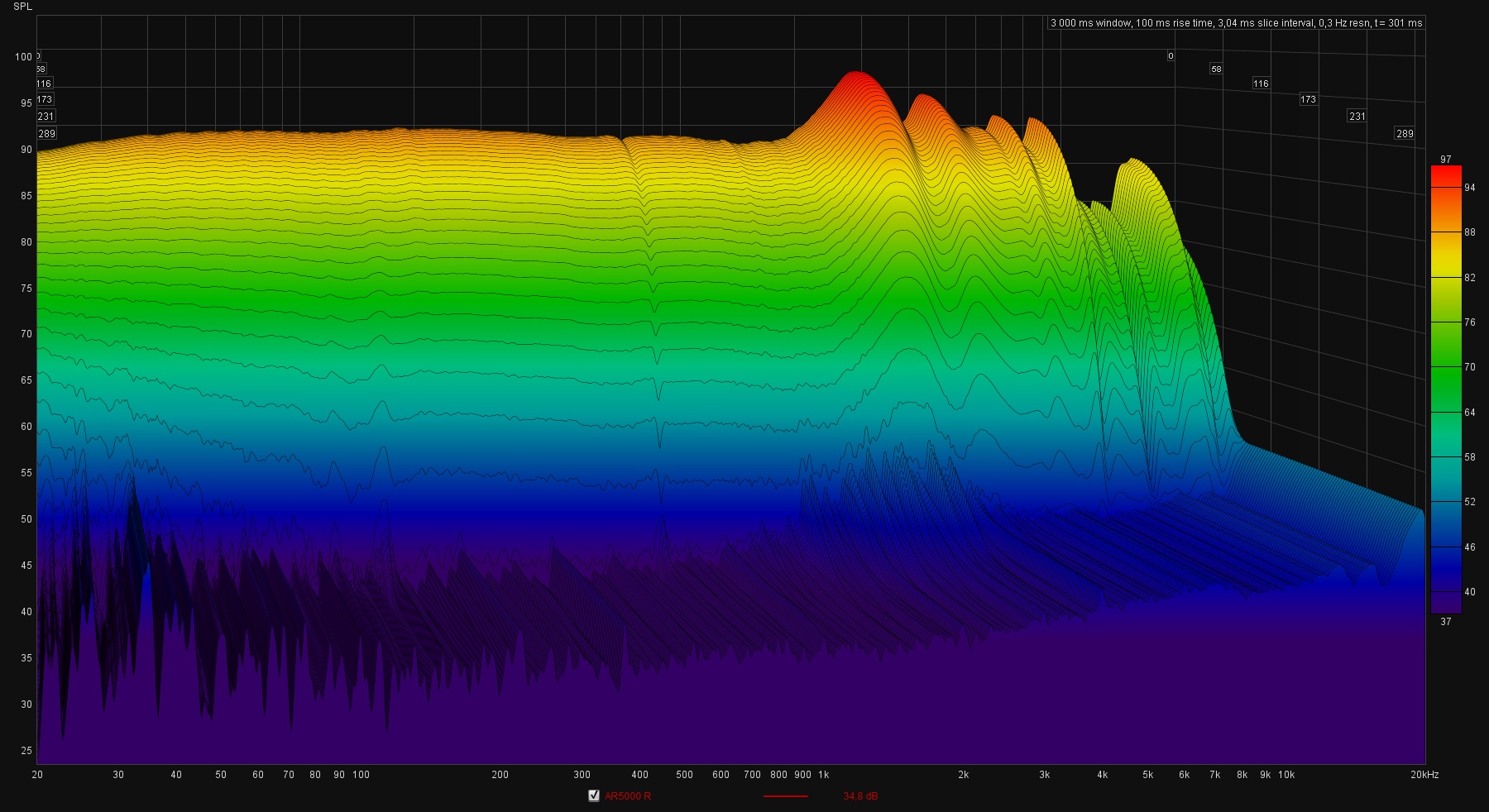
Comparisons
PLEASE NOTE: everything I say below is only applicable to the headphones from the point of view of comparison to other models, nothing more!
The AR5000 vs the PARA
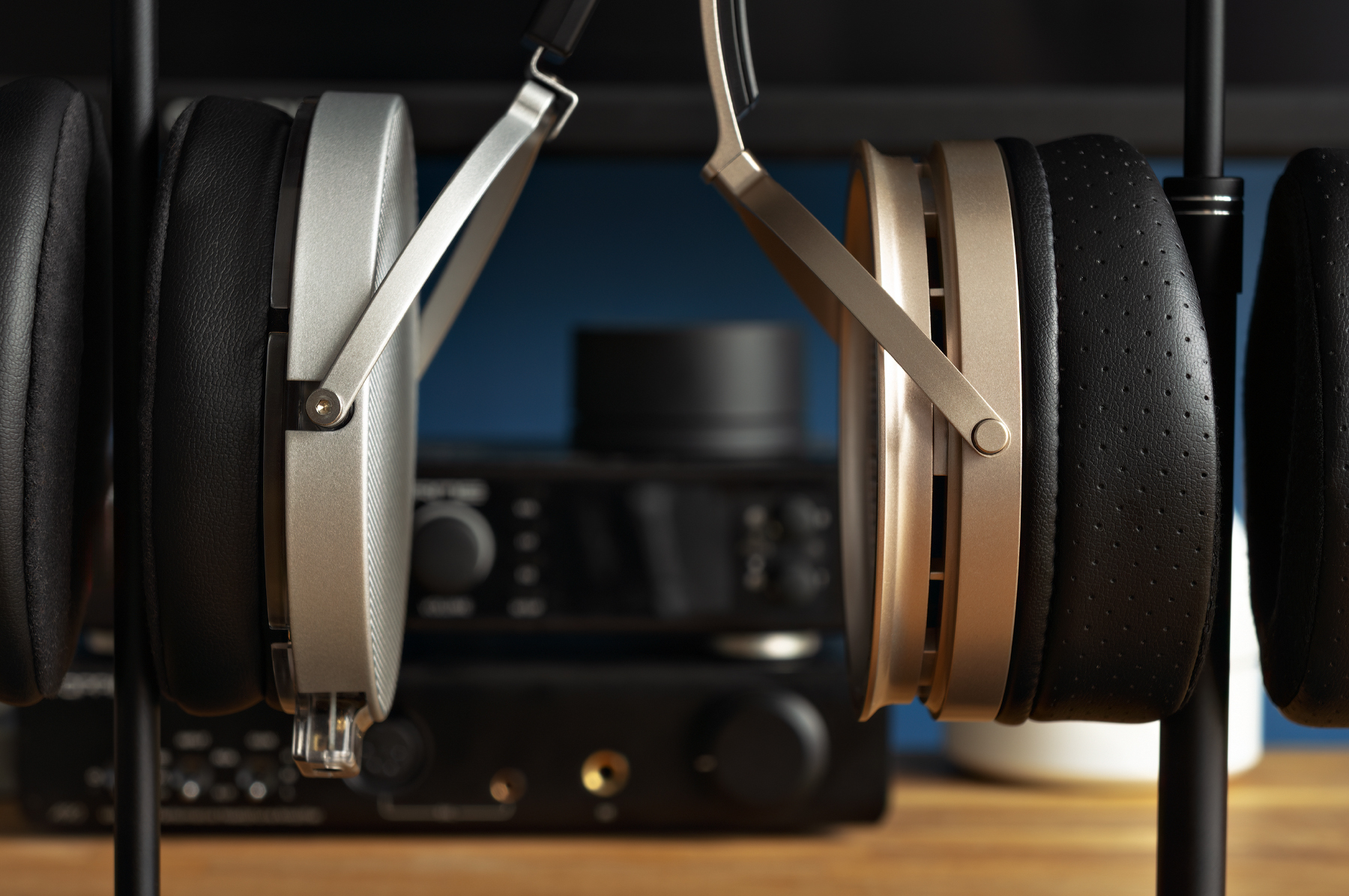
The Aune AR5000 and the Moondrop PARA frequency response graphs compared:
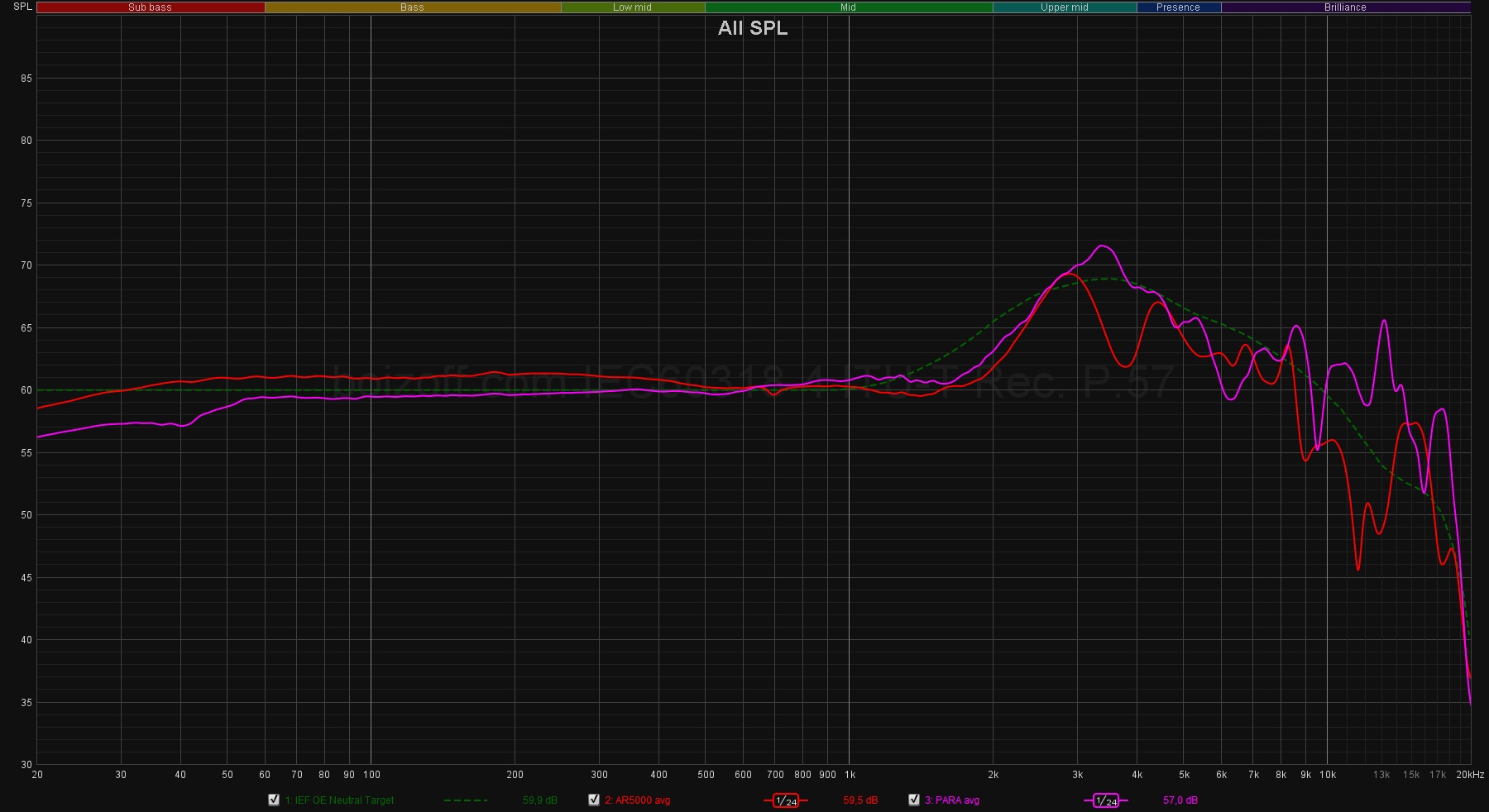
Subjective difference in sounding:
- the PARA feature a more whippy and technical subbass;
- the PARA have a ‘brighter’ tuning of the middle section, whereas the AR5000’s is more physical;
- the PARA’s upper frequencies are more ‘sparkly’, emphasized;
- the AR5000 has better sound stage perception.
Compared to each other, the AR5000 sounding can be roughly described as warm, natural, with a little bit of ‘dirt’, and the PARA sound sparkly and ‘artificial’.
Here are other differences to keep in mind:
- the PARA are 175 g heavier, and the overall ergonomics of the AR5000 is much better;
- the manufacturing quality of the models is comparable, but, to my taste, the AR5000 win by a tiny margin;
- the PARA come with two sets of earpads strongly affecting the sound, but the AR5000 have only one earpad set provided.
The AR5000 vs the Sundara
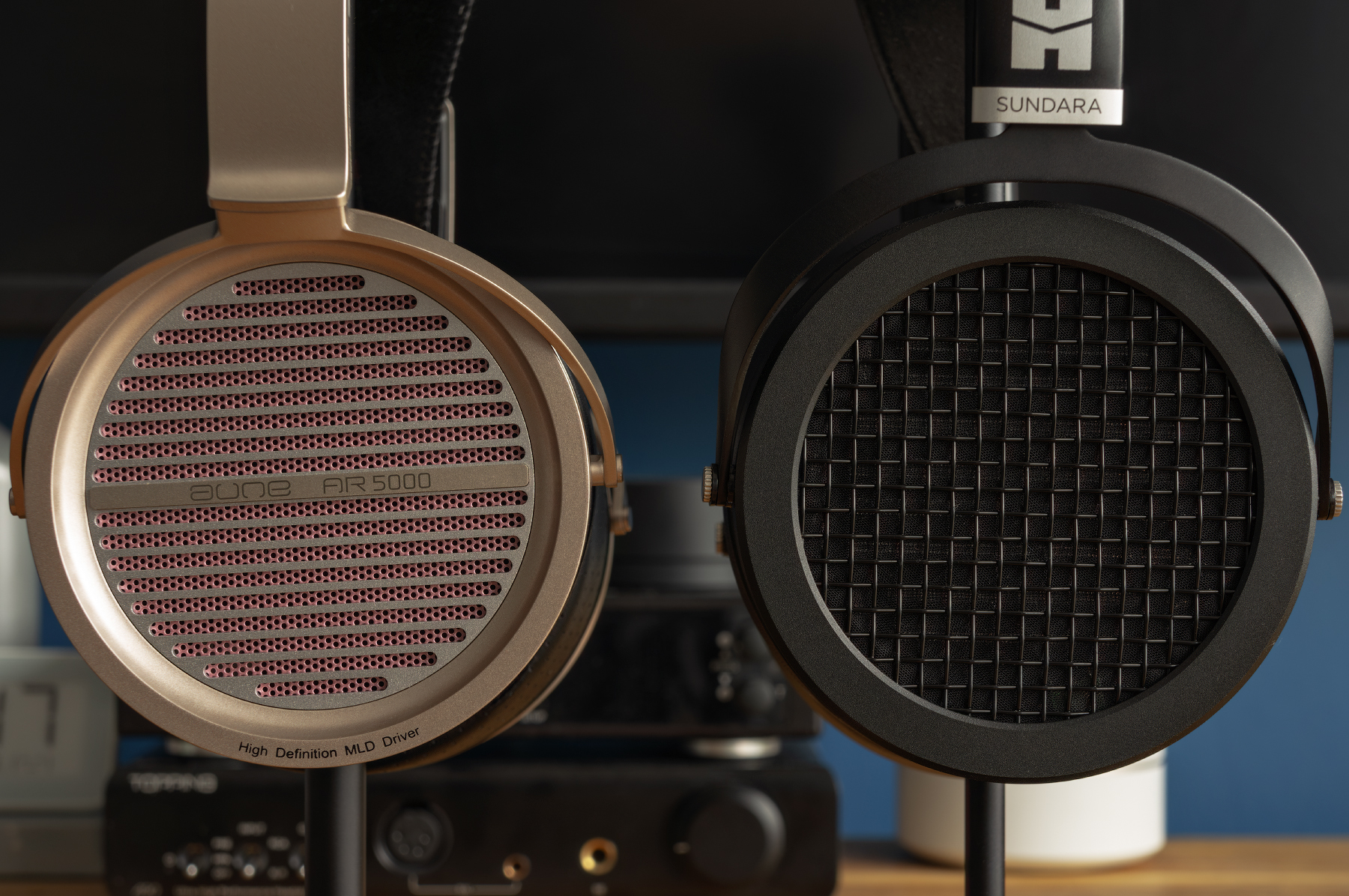
The Aune AR5000 and the HiFiMan Sundara frequency response graphs compared:
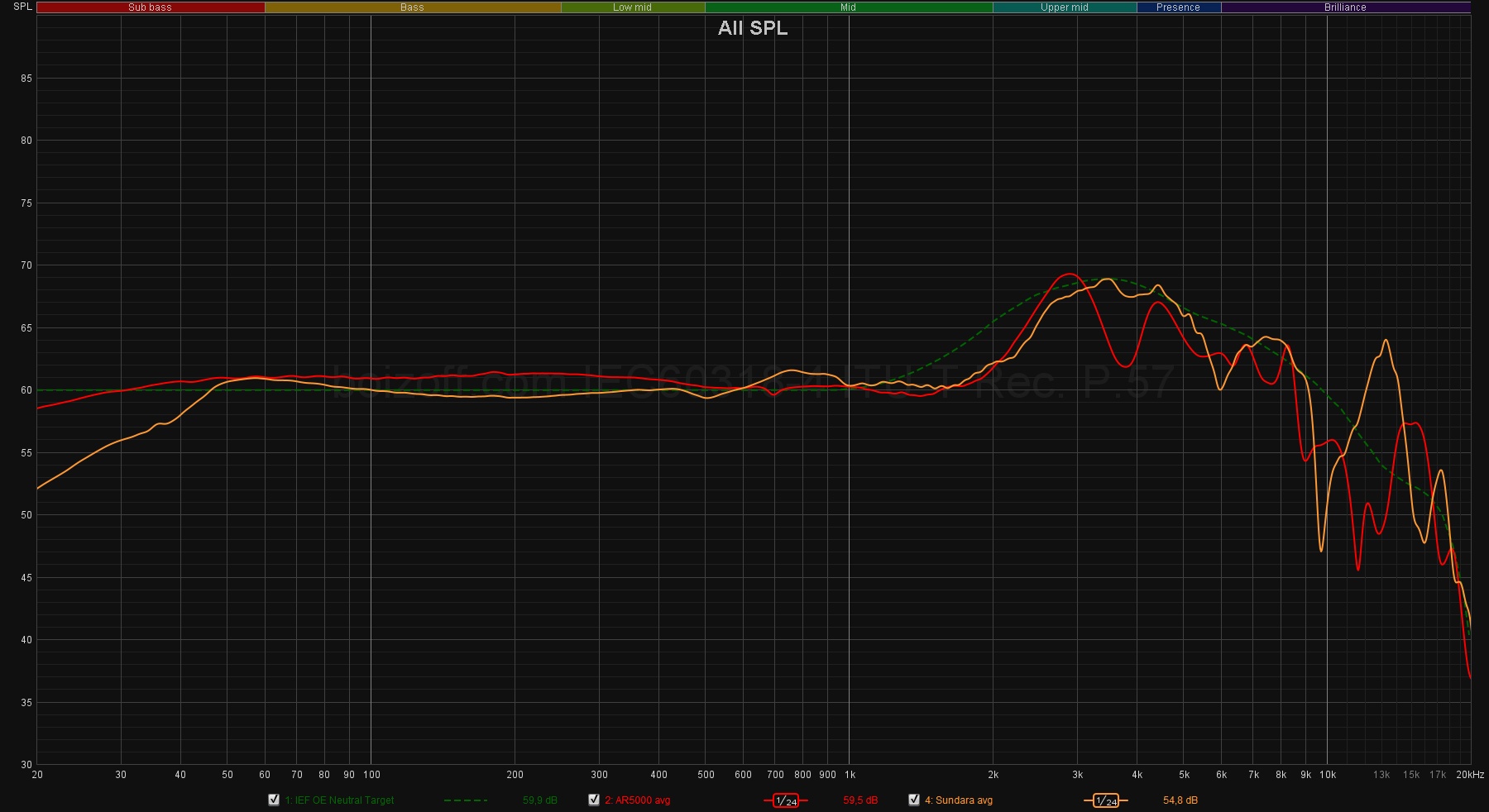
Subjective difference in sounding:
- the AR5000’s subbass is fuller;
- the Sundara’s sound feels more clear;
- the Sundara sound more sparkly, again.
Here are other differences to keep in mind:
- the AR5000 are better in terms of manufacturing and assembly quality;
- it wouldn’t be easy to slap some ‘skirt’ earpads on the Sundara – these feature latches;
- the Sundara are significantly more capricious in terms of the sound source power.
Compared to each other, the AR5000 sounding can be roughly described as deep, natural, with a little bit of ‘dirt’, and the Sundara sound neutral and lightweight.
The AR5000 vs the HD600
Does anyone own a pair of the Sennheiser HD600 with not too crumpled earpads? I obviously don’t.
Summary
No company, I repeat, no company normally has the slightest chance to shoot the very first headphone model that is good enough. Maybe some of you’d remember the iBasso SR-01 or the Moondrop Venus, the very first batch of which was recalled by the manufacturer.
But Aune’s bounced the industry market with already established players just like that! With fanfare! Which is actually odd, since the manufacturers usually reach the AR5000-level headphones after several years of intensive development and experimentation. Not from the very first attempt, to put it mildly. Well, I’m extremely curious about where the Aune learned the tricks. Did you lure the engineers away? Or was it your own R&D team? Or was it just sheer dumb luck?
My curiosity is strictly academic, since any (or almost any) potential buyer doesn’t care – they pick the headphones and their sound, not the development history.
And the AR5000’s sound is just awesome! The fine tuning – check! Interesting, detailed sound – check! Comfortable and realistic sound – check again! And mate. Add some high manufacturing and assembly quality, an outstanding level of comfort due to the low weight and engineered earpads, as well as a distinctive design.
So to buy or not to buy? The answer is definitely ‘to buy’.
I’m as charmed by the AR5000 as I possibly could be.

